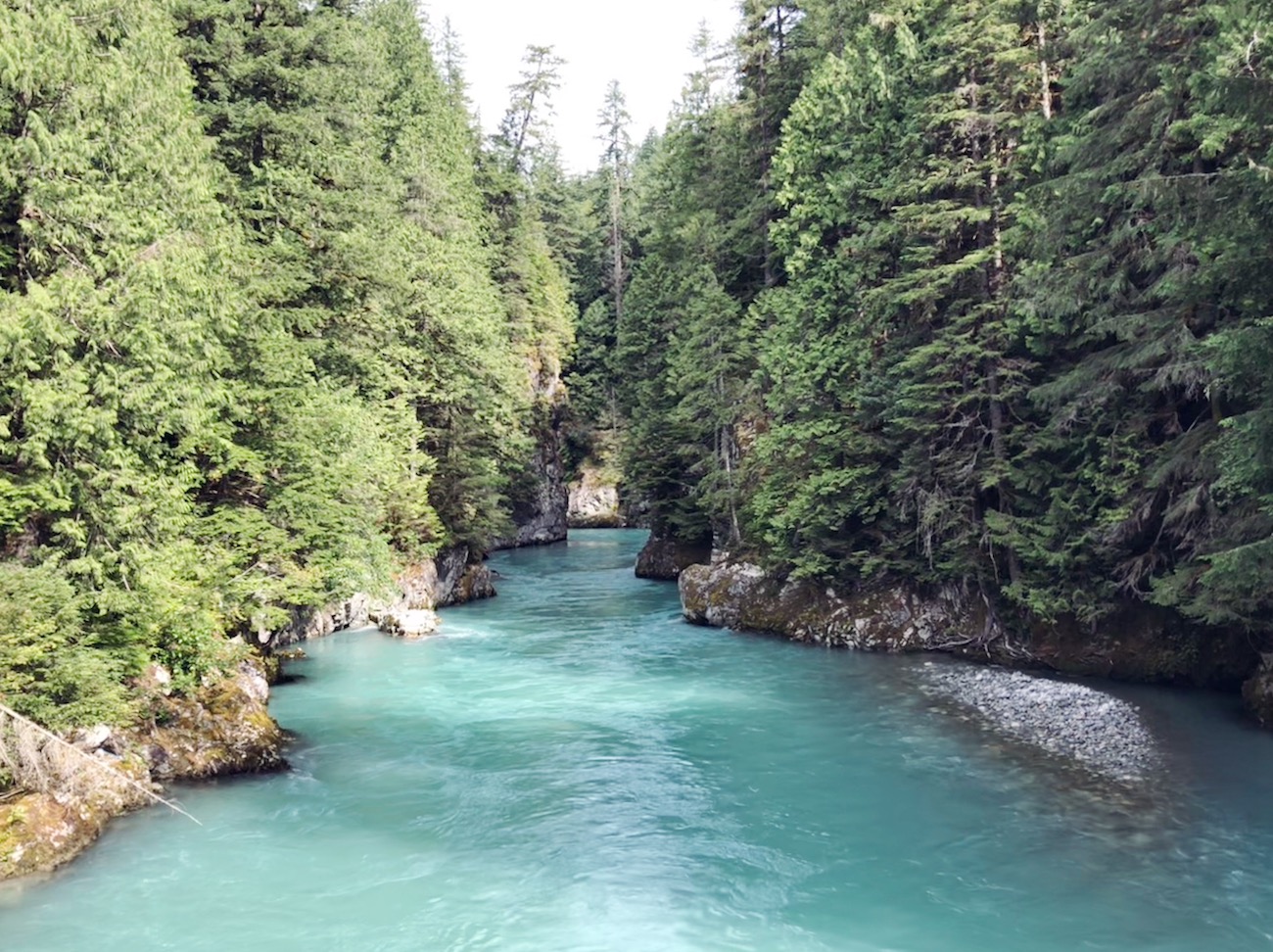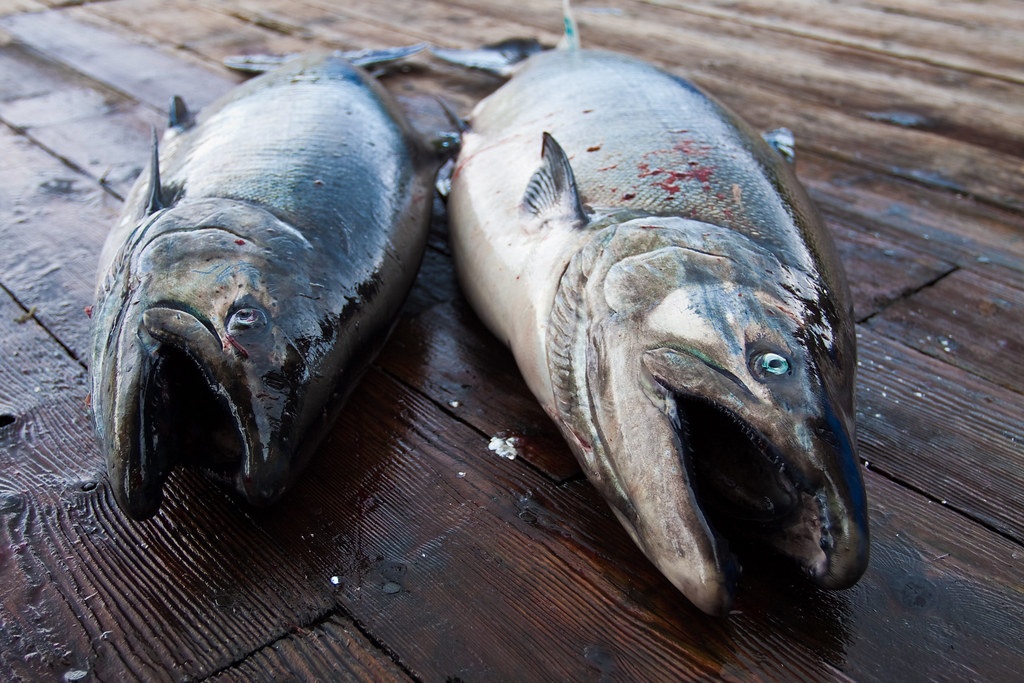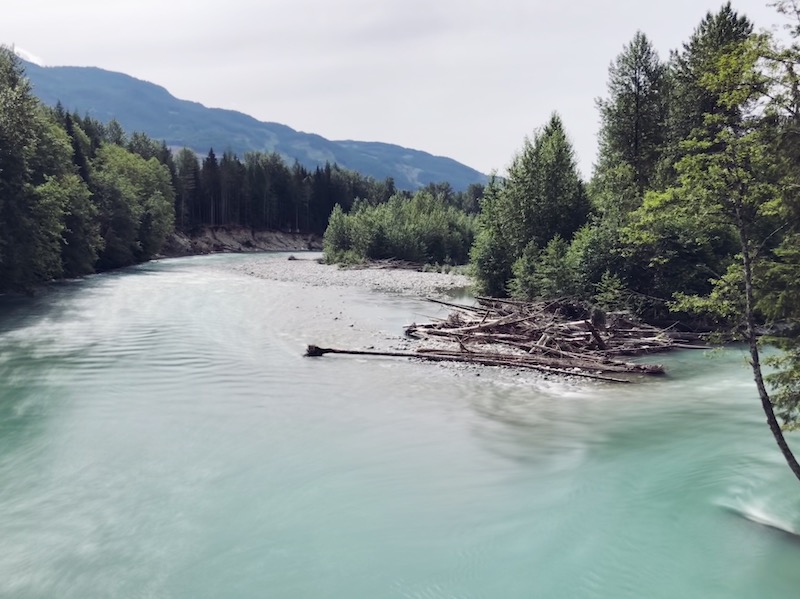Sixty years ago, the upper Pitt River near the Vancouver suburb of Coquitlam saw as many as 3,500 Chinook salmon migrate through its waters annually.
Last year, it saw 75. This year, the count looks even lower.
“The salmon are in dire straits right now,” said Rick Bailey, a councillor with the Katzie First Nation, who live along the river in the Lower Fraser Valley near a habitat area known as Blue Creek.
“Last year, we started fishing in April and got two six-hour opens. This year, we haven’t fished at all — and it’s now August.”
An “open” is the length of time a fishery is open, typically determined by the number of fish in the region at that time.
But the declining salmon populations around Bailey’s community is only a symptom of a much larger issue.
The entire Fraser River watershed suffers from pollution, habitat loss, habitat fragmentation, overuse of water, invasive species, climate change and alteration of flows, said Heather Crochetiere, senior freshwater specialist with WWF-Canada.
Her team uses these factors to generate a “threat score” for watersheds across Canada. The Fraser didn’t score well.
“When we look at the Lower Fraser watershed, we found that across all these threats, the overall threat score is high,” said Crochetiere. “And then if you dig into which individual indicators are driving that high score, habitat fragmentation is a main one.”
Habitat fragmentation occurs when an area — or river — is broken into smaller, isolated areas, often with different ecological characteristic. Cutting trees along a riverbank can result in higher water temperatures; a dam or landslide can increase sediment buildup; development can increase runoff into the river. Those can affect the ability of native species to survive and encourage new species to move in.
In the upper Pitt, the culprit has been landslides.
In spring 2018, a landslide deposited large barriers of sediment in critical Chinook spawning ground in Blue Creek about a kilometre from its confluence with the Pitt River.
“We got a big storm and a bunch of debris came down, plugged the culvert, went over the road and just followed its natural course to the big, high bank at the creek,” Bailey said.

Alvin Patterson Channel, a waterway in the upper Pitt region, is suffering from erosion. And Larson Creek, which runs parallel to the Pitt River, is still blocked by large, woody debris and rocks from a landslide a few years ago.
Habitat fragmentation is a particular threat to migratory species, said Crochetiere. The cases in the upper Pitt are stark examples.
“In this case, it’s important to have those free-flowing rivers because of the Chinook salmon,” said Crochetiere.
Fragmented rivers can lead to barriers that prevent species from relocating to more suitable environments, she said, which is especially damaging as the effects of climate change cause water temperatures in the Lower Fraser — the Pitt River is a tributary — to reach lethal highs in the summer.
Ian Hamilton, a biologist with the Lower Fraser Fisheries Alliance, said another strain is the fact that the “human footprint is all over the Lower Fraser.”
“A really good way to look at it is to ride the West Coast Express,” he said. “It runs right along the Fraser on the north shore from Mission. You’ll see very clearly how much of that important riparian riverside area has been completely destroyed by logging, pulp and paper, large marine industry and other development.”
Hamilton said the problems faced by the salmon are also felt downstream in the Salish Sea.
He pointed to the southern resident killer whale that carried its dead calf around for more than two weeks last summer.
While the story garnered a lot of sympathy, Hamilton said it points to a bigger cause for concern — the declining population of southern resident killer whales is tied to their lack of access to food.
“Southern resident killer whales are fish-eaters,” he said. “The southern residents that were inshore lost their matriarch in the last couple years, and, as a result, they’ve moved offshore to find better grounds because there’s not enough food.”
Hamilton also said that transient killer whales — which usually reside in offshore waters — have now “started pushing into the resident territory.” And because transients are mammal-eaters, Hamilton said that seals are now starting to push into the Fraser River to avoid predation — right into areas where salmon congregate when they make their first migratory run up the Fraser.
“You’re starting to see large-scale environmental impacts on other species that rely on salmon, having to change the mechanics of their life history in response to a lack of food,” he said. “And it’s all driven by salmon.”

The Katzie are now leading a series of restoration projects around the upper Pitt.
Working with the Lower Fraser Fisheries Alliance and WWF-Canada, they plan to focus on Blue Creek, Alvin Patterson Channel and Larson Creek, with the primary goal of flow restoration.
Bailey said that work on Alvin Patterson Channel, known as a sockeye spawning channel, would mainly involve maintenance.
“Every year, with big storms and spring thaw, the Pitt River can be pretty wild and the channel changes quite often, quite drastically,” he said. “There’s quite a bit of erosion.”
Hamilton said the channel has experienced a lot of sedimentation from side slopes and has become plugged.
Efforts on Blue Creek and Larson Creek will focus on removing debris accumulated from the landslides. The work at Blue Creek involves building a “biowall” to prevent damage in the lower reaches when the Pitt River floods, Hamilton said.
“Right north of Blue Creek, there’s a floodplain that used to be old-growth forest that’s been logged out, and the concern is that when the river levels in the Pitt River come up high enough, the water levels can flood over and do damage to the lower reaches of Blue Creek, where we know quite a few Chinook spawn on a yearly basis.”
Crochetiere is hopeful the work will ease strain on the local salmon and highlight the importance of protecting our disappearing free-flowing rivers.
“When we remove these barriers from the river, we’re restoring their migration route and reducing pressures on the ecosystem,” said Crochetiere. “We hope to see those [salmon] numbers come back.”
It’s a hope shared by Bailey and the Katzie — to whom the salmon are family.
“There’s an old prayer from an old chief, who, every time he was speaking at an event, would be asked to do the prayer,” said Bailey. “Part of the prayer was: ‘This is our land, and we have to take care of everything that’s ours.’ We call these fish ours. I call them family. We have to take care of their home so they keep coming back.” ![]()
Read more: Environment
















Tyee Commenting Guidelines
Comments that violate guidelines risk being deleted, and violations may result in a temporary or permanent user ban. Maintain the spirit of good conversation to stay in the discussion.
*Please note The Tyee is not a forum for spreading misinformation about COVID-19, denying its existence or minimizing its risk to public health.
Do:
Do not: